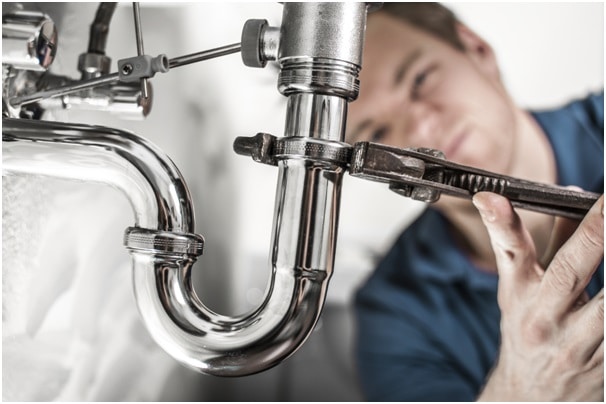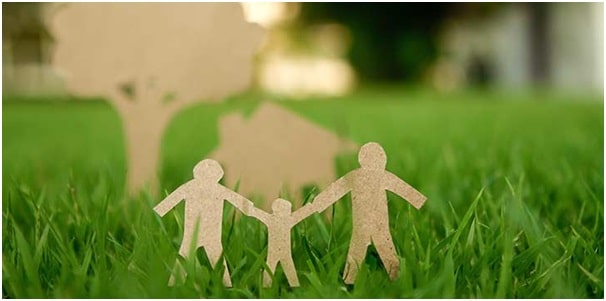
Environmental issues have raised more awareness among people during the past 20 years. Though we can not compare the damage caused by big corporations and damage by ordinary homeowners, we can still try to reduce it at all costs.
Carbon footprint is a serious issue. If this word combination doesn’t sound familiar to you, here is the information — carbon footprint is a shorthand term to describe the best estimate of what we can get from the full impact of climate change on something. It can be anything – an activity, a place, a lifestyle, a company, a country, or even the whole world. Many of our activities contribute to the rapid formation of greenhouse gases in the atmosphere: for example, burning fossil fuels, mining resources, using vehicles with gasoline and diesel engines, construction, agriculture, manufacturing of various goods, and others.
Industrial and domestic processes that are directly related to the combustion of fossil fuels and have an impact on the environment: the use of a personal gasoline car, frequent air travel, uncontrolled consumption of various resources are considered to be direct (primary) sources of the carbon footprint. Secondary or indirect sources include the products we buy: food, clothing, household goods, etc., since in this case, we take into account the greenhouse gases that enter the atmosphere during the production of, for example, plastic packaging, as well as transportation of products to their destination.
According to the Ministry of Natural Resources, on average around the world, more than 20% of greenhouse gas emissions come from power plants, 16%, and 14% – from production processes and transport fuel, 12.5% - from agriculture, a little more than 11% – from the search for fossil fuel, it’s processing, and distribution, more than 10% of emissions come from residential, commercial and other sources, 10% from land use and biomass combustion and just over 3% from waste emissions.
We can not really calculate the exact carbon footprint left from each particular person, but we can do it precisely, at least. For example, the Greenpeace website has a calculator where you can calculate your carbon footprint and understand how you can change the situation.
Most of the confusion surrounding carbon footprints comes down to the distinction between “direct” and “indirect” emissions. The carbon footprint of a plastic toy, for example, includes not only direct emissions from the manufacturing process and transportation of a toy to the store: it also includes a range of indirect emissions, such as those caused primarily by the extraction and refining of oil used to create plastic. And this is only part of all the processes.
Fully tracing the entire chain of events that could and could not have happened when creating this toy leads to an infinite number of paths, most of which are infinitely small. In order to focus on the essentials, let’s try to follow the simplest of these paths. But employees in the offices of the plastic factory also use paper clips made of steel. And steel also has small emissions, given the content of the excavator in the iron mine, from where it was originally mined, and so on ad infinitum. The carbon footprint of a plastic toy is so many factors that it is not easy to determine its exact size.
Household carbon footprint is connected to many aspects of everyday life, including the plumbing system, of course.
When the issue with electricity usage and rubbish recycling can be solved quite easily, and you do not really need to rebuild your house for it, the water issue is more complicated. But do not worry. After this article, you will be a pro when it comes to environmentally friendly plumbing! Some of the tips can be used right away, and some of them require more planning and research. Though if you really care about our beautiful planet Earth’s environment, you will succeed in it one way or another.
First of all, you should be very responsible if you decide to go green. If you start following the tips, be ready to continue; otherwise, there is no point in doing that. Coming back to old negative habits is no good. If you live in a family, it might be useful to talk them through it and make sure that they also encouraged the idea of green plumbing. Step by step, every day, you will reduce both your carbon footprint and bills. Yes, sometimes your attempts might feel like a drop in the ocean, but always remember that the ocean itself consists of the drops. You can inspire other people to become green homeowners, and it will be a way different story. We can not change the whole world and get rid of huge corporations in one second, but we can start with ourselves and try to change our everyday lives.

Though it is hard sometimes to change old habits and your general lifestyle, in our age of technology, we can do it so much faster and easier than it was in the past. Now we do not have to invent things, because there are many options on the market already. The plumbing industry moves forward very fast, and it is a fact that nowadays, plumbing related companies take environmentally-friendly aspects seriously. When it comes to minimizing water consumption, consider checking out the touchless faucets. This technology is widely used in malls, airports, restaurants, universities, and other public places. The water is only running when your hands are under the sensor, so you do not waste water while brushing your teeth or washing your hands. Also, this technology is good for hygiene because you do not have to touch anything, and your hands remain sterile at that point.
There are lots of other options that are similar to touchless faucets. The price range is wide, by the way, so being a green homeowner is not a luxury that it may seem. One of the options is a low flow shower fixture. This feature will help you to lower water usage while showering. When we shower, our water consumption becomes huge. A shower or a bath tube (or even both) is the most important place in your house that you need to think of while remodeling your house into one with a friendly plumbing system.
What is wrong with your old traditional water heater? Yes, it probably served you well for many years and kept your home nice and warm. But if you analyze how it works, you may want to finally change it to the tankless water heater. So basically, traditional water heaters store water inside and preheat it. It works every hour for seven days a week. Ever thought that your electricity bills are too much? Well, this is the cause. Tankless water heaters heat the water only when it is needed. If you research those further, you will see how much money and electricity you can save using tankless water heaters.
If you decided to become a green householder, you should understand that you will need professional help to rebuild your plumbing system. Choose a good company that provides green plumbers. Their specialists are not only professionals in the general technical side but also have the knowledge and specialized equipment to make sure your plumbing system is ecological and saves your money. They are trained to analyze plumbing systems and give you proper advice on how to change it, which features are more suitable to your home, and all that jazz. Good companies also provide special service in case of emergencies, which is very important too, because you never know what can happen and you have to be prepared for it and know that you can ask for the help of professionals.
The choice of a plumber is a serious thing. Your plumbing system must be not only green and environment-friendly and safe for you and your family. The quality of the pipes and the quality of a plumber’s work must be at a very high level. Water has a huge impact on our health and everyday life, so you better do not treat it skin-deep.
Even if your plumbing system is green and great, you still need to be careful with it. Your toilet is a dangerous thing for your pipes. People usually do not care about what they are flushing in their toilets. Sometimes they think that if the items are small, they won’t cause any trouble, and it is a great mistake, to be honest. Paper and cotton balls build up inside your pipes, and they do not disappear. And if you have a big family with kids, the lack of knowledge might be dangerous. Make sure to talk to your kids about that, because kids love to play and flush different stuff in the toilet. Also, keep a rubbish bean next to your toilet and put used paper towels and wipes there.
Talking about toilets, have you ever heard of the eco ones? Yes, to change your toilet may sound like a pricey deal, but toilets are one of the biggest water wasters in your house, and eco-toilet options are twice less harmful than traditional ones. Eco toilets can help you to save so much water per flush.
Also, a very important aspect of this topic is cleaning the pipes. Even if you care about your pipes, they still need to be cleaned to prevent pollution at least 3 to 5 times a year, in the best scenario. Cleaning supplies for pipes are usually toxic and harmful to the environment. Be ready to do good research or ask your green plumber for advice on which cleaning supplies will be better for your plumbing system and how to choose ecological ones. There will be no trouble to find the right supplies. Just keep in mind this thing.

The carbon footprint, as we have already identified, is an important measure of our overall picture of climate change. The dilemma is that it is almost impossible to deduce it into an exact figure. We are unable to accurately determine the impact of our apples and chocolate bars by comparing them to the impact of all other foods that we could buy instead, considering the way they are grown, transport, storage, and related processes at all these stages. So what should we do in such situations? How do we output metrics with such a huge volume of input data?
One of the most common answers is to give up and measure something simpler, even if it means losing sight of most of what you want to measure. This method is popular among illusionists: by focusing the attention of their audience on something irrelevant, they quietly promote what matters for them and take advantage of their audience. For example, they can talk about the energy efficiency of airports without mentioning the flights themselves.
The same can happen to you when you measure your carbon footprint with some kind of calculator that misdirects your attention while avoiding important questions. The answer and solution to this dilemma are in your development and learning. Take as many things and aspects to your consideration as possible. Do not let any calculator fool you.
Your home is the best place to start changing your carbon footprint. It is your area where you set the rules. It is almost like a small separate state. You can make your own decisions depending only on your thoughts. Not using these opportunities for good might seem egoistic. So if you feel like you can change your lifestyle for the better, then, of course, move forward to it and do not ever stop.
Changing your plumbing system to an environmentally friendly one can be an interesting journey for you and your family. If you follow every piece of advice from this article — soon you will see the improvements. You will waste less water and less money, and this can inspire you to change other aspects of everyday life.
I bring over 9 years of dedicated plumbing experience to the table. As a seasoned professional in the plumbing industry, I've tackled a wide range of projects, from residential repairs to large-scale commercial installations.

